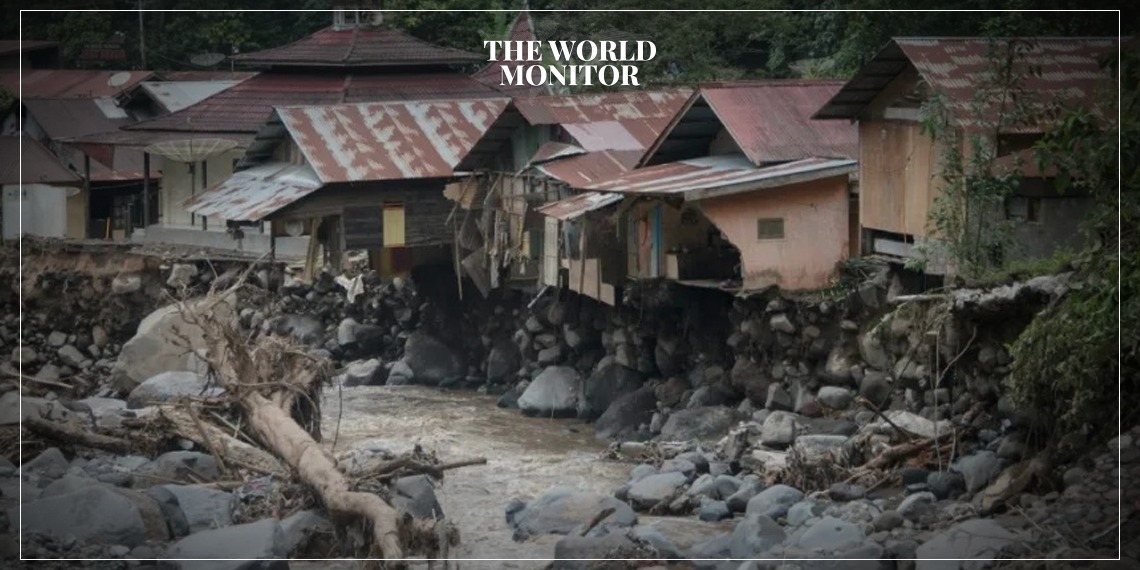At least 43 people have perished, and 15 remain missing following devastating floods and cold lava flows on the Indonesian island of Sumatra. The latest toll provided by local authorities on Monday marks a grim increase from previous reports.
Heavy rainfall on Saturday evening triggered sudden floods and a surge of cold lava flows originating from Mount Marapi, a volcanic mountain in West Sumatra. The downpour, which began around 10:30 PM local time (15:30 GMT), caused extensive damage across the Agam and Tanah Datar regions of West Sumatra.
Abdul Mahari, a spokesperson for the National Disaster Management Agency, confirmed that the cold lava flows in West Sumatra had resulted in 43 fatalities. This update surpassed an earlier report, which counted 41 deaths.
According to Abdul Malik, head of the local relief agency in Padang, among the recovered bodies were two children, ages three and eight. Rescue teams continue to search for the 15 individuals who are still unaccounted for.
Local residents reported hearing the sound of rocks falling on roads near their homes during the heavy rainfall. Budi Rahmat, a 44-year-old farmer, described how his house “shook… all I could think about was how to save my wife and children.”
Ilham Wahab, an official from the West Sumatra disaster management agency, advised residents to seek shelter in more secure locations, such as relatives’ homes, instead of tents, in case of heavy rains. “Our focus is firstly on search and rescue operations, and then on protecting those who have been evacuated and the vulnerable,” Wahab stated.
Mahyeldi Ansharullah, the Governor of West Sumatra, told reporters on Monday that about 130 people were evacuated to an elementary school in Agam, with over two thousand others taken to a school in Tanah Datar.
The affected areas have turned into muddy swamps, with homes inundated and vehicles swept into nearby rivers. Cold lava, a mix of various volcanic materials including ash, sand, and rocks, becomes mobilized by rain and flows down the mountain.
The situation has prompted authorities to deploy rescue teams in rubber boats to search for the missing and relocate residents to shelters. Local governments have established evacuation centers and emergency hubs in several areas across the Agam and Tanah Datar districts.
In Agam, a region with over 500,000 residents, dozens of homes and public buildings have sustained damage, according to the local disaster management agency. In Tanah Datar, home to about 370,000 people, the national disaster agency reported on Sunday that 84 homes, 16 bridges, and two mosques were damaged, along with 20 hectares of rice fields.
Survivors described the terror they felt as the floods and landslides began. Rina Devina, a 43-year-old housewife, told AFP, “I heard the thunder and a sound like boiling water. It was the noise of large rocks falling from Mount Marapi.”
Devina, a mother of three, noted that her home was undamaged, but she evacuated to the municipal center as the power went out and she fled with her family under heavy rain. “It was pitch dark, so I used my mobile phone as a flashlight. The road was muddy, and I kept screaming, ‘God, have mercy on me!’ repeatedly,” she recounted.
Floods and landslides are common in Indonesia during the rainy season. Dwikorita Karnawati, the head of Indonesia’s Meteorological, Climatological, and Geophysical Agency, explained that West Sumatra is an “exceptional area” where it can rain almost all year round, constantly posing risks of floods and landslides.
In 2022, around 24,000 people were evacuated, and two children died due to floods in Sumatra. Environmental activists in the region believe that flooding has become more destructive due to deforestation.


